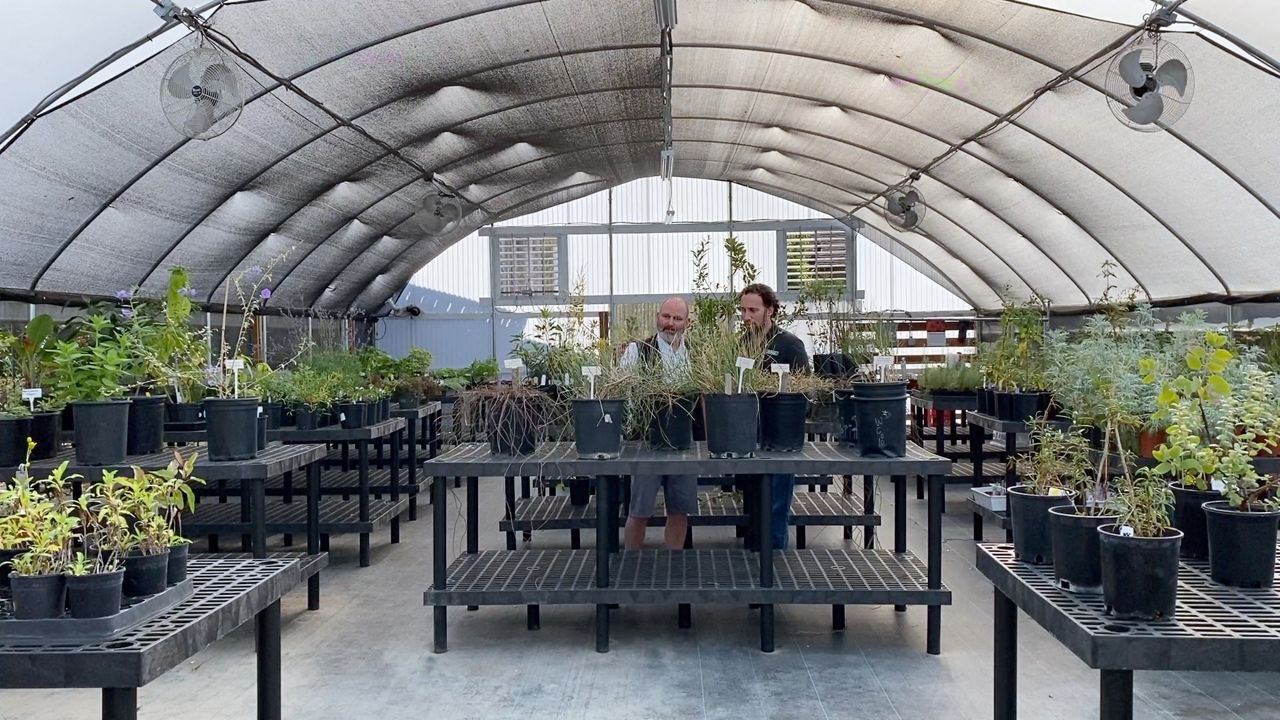SAN DIEGO — The San Diego Botanic Garden is part of a research consortium growing solutions in a living laboratory.
The healing power of plants always amazes Ben Naman.
“Even just touching the outside [of the plant California sagebrush] and giving it a good smell, you start to feel better,” Naman said.
Naman is a medicinal plant chemist at the San Diego Botanic Garden. His "laboratory" is full of plants that are being grown and studied for their medicinal properties.
Naman says historically, plants have often held the key to curing illness: An extract of Chinese Sweet Wormwood was developed into a medication used to treat malaria, many indigenous tribes use White Sage to treat colds, coughs and headaches, and ephedra is an herb that’s been used in Traditional Chinese Medicine for thousands of years to treat asthma and bronchitis.
“[White Sage] is a plant that’s just generally good for your body and for your soul,” He said. “We don’t use them by injections. These are things that you have to breathe in the vapors of, or brew into tea and drink or chew on, or apply topically. In that way, they’re very different than western medicines.”
The plant collection at the botanic garden is part of a research consortium aiming to go deeper, made possible by a $384,000 grant from The Conrad Prebys Foundation. Just as willow tree bark has been used as a pain reliever for centuries, and study of the active ingredient, salicin, led to the development of the world's most commonly used drug, aspirin, the consortium intends to unlock more plant-based solutions and foster new medicinal discoveries.
Todd Michael is a research professor at the Salk Institute for Biological Studies. He says factors like growing conditions and genetic makeup mean that no two plants are identical, and they all have chemical toolboxes to help them survive. Michael is using environmental chambers at Salk to place the plants grown at the botanic garden through different kinds of stressors to see how they respond.
“We move them into a controlled environment like this, where we can control the lights, we can control the temperature," Michael said. "And then we can give them different treatments like deprive them of water or give them too much light or not enough light, and see if they actually express the chemical or the medicine of interest in a different way or more of it.”
Michael then reads the blueprint of the plant using a DNA sequencer and shares the results with the organizations within their consortium. While it may be years before any new drugs come out of this collaboration, Michael says he’s excited for what they might discover.
“One of the things that we’re hoping is that if we can grow them here at the [botanic] garden, then we’ll be able to access them and actually explore more of the kind of medicinal characteristics that they have," he said. "So that the future can be brighter with these plants.”

Michael and Naman believe nature can produce the chemicals we need to live healthier lives in the future.
“We’re really trying to look at this in a very deep and holistic kind of way that we believe hasn’t really been done before,” Naman said.
According to The Nature Conservancy, San Diego is the most biologically diverse county in the contiguous United States.
The San Diego Botanic Garden is also establishing a medicinal plant garden area that visitors can explore.
Additional partners that will guide this project include the Sanford Burnham Prebys Medical Discovery Institute; the San Diego Branch of the Ludwig Institute for Cancer Research and other drug discovery and plant science experts from at the University of California San Diego; Ionis Pharmaceuticals; SRI (formerly Stanford Research Institute); indigenous ethnobotany experts from Kumeyaay Community College; and the Tribal Historic Preservation Office for Jamul Indian Village of California.



